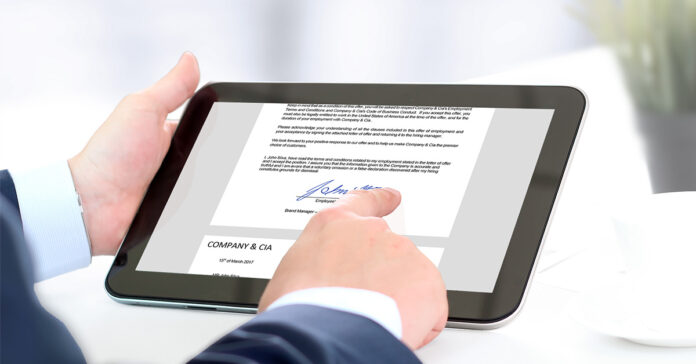Whether you’re signing a contract, completing a purchase, or just agreeing to terms and conditions, chances are you’ve come across an eSignature at some point. An eSignature, known also as an signature performed electronically. This is basically just a digital version of your handwritten signature that can be used to certify agreements or documents electronically. In today’s blog post, we’ll be sharing some tips on how to make the most out of esignatures.
1. Use a reputable eSignature service.
When it comes to putting your name on something, you want to be sure that the esignature service you’re using is reputable and secure. That’s why we recommend using a well-known eSignature service like DocuSign or Adobe Sign. These services use encryption to protect your personal information, and they’re trusted by companies around the world.
2. Keep your computer up-to-date.
It’s important to make sure that your computer is running the latest version of its operating system. Outdated software can be a security risk, and it could cause problems with certain eSignature services. To check for updates on a Windows PC, open the Settings app and click “Update & Security.” On a Mac, open the App Store and click the “Updates” tab.
3. Review the document carefully before signing.
Before you put your name on any document, make sure you understand what you’re agreeing to. Read the document in its entirety and ask questions if anything is unclear. Once you’re confident that everything is correct, then and only then should you sign the document electronically.
4. Keep a record of your esignatures.
Just like with a traditional handwritten signature, it’s important to keep records of your esignatures in case they’re ever needed for legal or reference purposes. Most eSignature services offer the option to save and download signed documents, so make sure you do so after each transaction. It’s also a good idea to keep track of the date and purpose of each signed document in a separate file.
5. Use a consistent signature.
Just as with your handwritten signature, it’s important to use the same electronic one consistently. This can help prevent confusion or potential fraud. When creating your eSignature, make sure you carefully replicate the way you write your name in pen. And remember to always use the same device and eSignature service for consistency.
6. Be wary of phishing attempts.
Remember that no legitimate company or organization will ask for your eSignature or personal information via email. If you receive a suspicious request, do not click on any links or provide any information. It’s best to contact the sender directly using contact information from a trusted source to verify the validity of the request.
7. Understand the legal implications.
In many cases, esignatures are just as legally binding as traditional handwritten signatures. However, it’s important to understand the laws and regulations surrounding electronic contracts in your jurisdiction. Familiarize yourself with any applicable eSignature laws and make sure you’re in compliance before using them for important transactions.
Using esignatures can make completing agreements and transactions much more convenient and efficient. By following these tips, you can ensure that your electronic signatures are secure and properly documented.


















